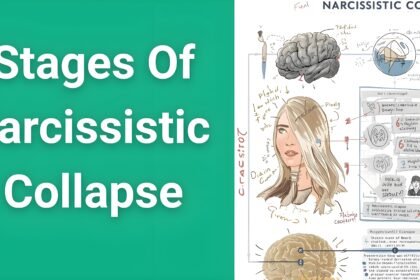Leaving a narcissistic relationship represents one of the most challenging yet courageous decisions you'll ever make. The first 48 hours after breaking free are absolutely critical for your safety, emotional well-being, and long-term recovery. Understanding exactly what actions to take during this vulnerable window can mean the difference between successfully escaping the cycle of abuse and getting pulled back into dangerous patterns.
- Why The First 48 Hours Are Critical
- Step 1: Secure Your Physical Safety and Location
- Step 2: Implement Complete No Contact
- Step 3: Document Everything Immediately
- Step 4: Secure Your Finances and Change All Passwords
- Step 5: Reach Out to Professional Support Systems
- Step 6: Inform Your Support Network and Set Boundaries
- Step 7: Create an Immediate Self-Care and Grounding Plan
- Moving Forward: Building Your Foundation for Recovery
Think of these first two days as laying the foundation for your new life. Just as a building requires a solid foundation to remain stable, your recovery journey needs immediate, strategic actions to ensure your safety and set you up for healing. The steps outlined here aren't just suggestions—they're essential safety measures that trauma experts and survivors alike recognize as crucial for protecting yourself during this high-risk period.
Why The First 48 Hours Are Critical
Before diving into the specific steps, it's important to understand why this timeframe is so significant. Narcissists typically respond to abandonment with what psychologists call “extinction bursts”—intense, escalating attempts to regain control when they realize their usual manipulation tactics aren't working. This period often involves love-bombing, threats, guilt-tripping, and sometimes dangerous behaviors.
Your nervous system is also in a heightened state during this time. After prolonged exposure to psychological manipulation, your brain's threat-detection system remains hyperactive, making clear decision-making challenging. These urgent steps help create immediate safety while your system begins to regulate.
Step 1: Secure Your Physical Safety and Location
Your immediate physical safety takes absolute priority. If you're still in the same living space as the narcissist, remove yourself as quickly as possible. This might mean staying with trusted friends, family members, or even checking into a hotel temporarily.
Contact domestic violence hotlines if you need immediate assistance with safe housing. The National Domestic Violence Hotline (1-800-799-7233) operates 24/7 and can connect you with local resources, even if the abuse wasn't primarily physical. Many people don't realize that psychological abuse often escalates to physical violence when the abuser feels they're losing control.
Create what safety experts call a “safety circle”—inform at least three trusted people about your situation and your whereabouts. These individuals should understand that they shouldn't share your location with anyone, including well-meaning mutual friends who might inadvertently compromise your safety.
If you're concerned about being tracked, consider temporarily disabling location services on your phone or even using a different device. Narcissists often use technology to monitor and control their partners, and they may attempt to use these tools to locate you after you've left.
Step 2: Implement Complete No Contact
Establishing no contact means cutting off all forms of communication with the narcissist—no phone calls, texts, emails, social media interactions, or communication through third parties. This step often feels counterintuitive, especially if the narcissist is using emotional manipulation or threats to try to draw you back.
Understanding why no contact is essential helps you maintain this boundary when it feels difficult. Every interaction, even brief ones, gives the narcissist an opportunity to manipulate your emotions and potentially convince you to return. Narcissists are skilled at identifying your emotional triggers and will use any opening to exploit your vulnerabilities.
Block the narcissist on all social media platforms, delete their phone number, and mark their email address as spam. If you share children or have legal obligations that require communication, establish these interactions through a third party like a lawyer or use court-approved communication apps that document all exchanges.
Inform your workplace about the situation if necessary. Narcissists sometimes attempt to contact their former partners through professional channels, and your colleagues should know not to provide any information about your schedule or whereabouts.
Step 3: Document Everything Immediately
Begin documenting all interactions, threats, or attempts at contact from the narcissist. This documentation serves multiple purposes: it helps you recognize patterns of manipulation, provides evidence if legal action becomes necessary, and validates your experiences when self-doubt creeps in.
Create a dedicated folder on your phone or computer where you can screenshot text messages, save voicemails, and document any incidents. Include dates, times, and detailed descriptions of events. If the narcissist shows up at your workplace or home, write down exactly what happened, including any witnesses present.
Many survivors find that keeping this record helps them maintain perspective during moments when they question their decision to leave. Narcissists are skilled at making their victims doubt their own perceptions—a tactic called gaslighting. Having concrete evidence of problematic behaviors helps you trust your own judgment.
Save any previous evidence you might have, including manipulative text messages, emails that demonstrate controlling behavior, or photos of any damage to property. Even if these items seem minor now, they may become important later if you need to establish a pattern of abusive behavior.
Step 4: Secure Your Finances and Change All Passwords
Financial control is a common tactic used by narcissists to maintain power over their partners. Take immediate steps to protect your financial independence by changing passwords on all bank accounts, credit cards, and financial platforms. If you have joint accounts, contact your bank to discuss your options for protecting your funds.
Remove the narcissist as an authorized user on any credit cards and notify credit monitoring services to watch for suspicious activity. Narcissists sometimes open new accounts in their partner's name or make unauthorized charges as a form of financial abuse or revenge.
Consider opening a new bank account at a different institution, especially if the narcissist has any access to your current accounts. Use electronic statements sent to a private email address to avoid physical mail that could reveal your location.
Change passwords on all your digital accounts, including email, social media, streaming services, and any shared accounts. Use strong, unique passwords and enable two-factor authentication wherever possible. Narcissists often use shared passwords to monitor their partner's activities or impersonate them online.
Step 5: Reach Out to Professional Support Systems
Professional support becomes crucial during this vulnerable period. Contact a therapist who specializes in narcissistic abuse and trauma recovery. Many therapists offer emergency sessions or can refer you to crisis counselors who understand the unique challenges of leaving narcissistic relationships.
If professional therapy isn't immediately accessible, call the National Domestic Violence Hotline or similar organizations in your area. These trained counselors understand the psychological aspects of abusive relationships and can provide immediate emotional support and practical guidance.
Consider joining support groups specifically for narcissistic abuse survivors. These groups, whether in-person or online, connect you with people who understand your experience without judgment. The validation and practical advice from other survivors can be incredibly healing during this difficult time.
Many communities offer free or low-cost counseling services through religious organizations, community centers, or mental health nonprofits. Don't hesitate to reach out to multiple resources—you deserve support, and these services exist specifically to help people in your situation.
Step 6: Inform Your Support Network and Set Boundaries
Carefully select trusted friends and family members to inform about your situation. Focus on people who have consistently shown good judgment and emotional maturity. Share enough information so they can support you effectively, but be prepared that some people may not fully understand the complexity of narcissistic abuse.
Set clear boundaries about what kind of support you need. Some people might try to convince you to “work things out” or may not understand why you can't simply “get over it.” Educate your support network about narcissistic abuse so they can better understand your experience and provide appropriate support.
Be cautious about who you trust with details about your location or daily activities. Unfortunately, narcissists are often charming and manipulative with mutual friends and family members, sometimes convincing them to share information or advocate for reconciliation.
Consider temporarily limiting your social media presence or adjusting privacy settings to prevent the narcissist from gathering information about your activities through mutual connections. Many narcissists use social media stalking as a way to maintain psychological control even after the relationship has ended.
Step 7: Create an Immediate Self-Care and Grounding Plan
Your nervous system has likely been in a chronic state of hypervigilance due to the emotional abuse, and it needs immediate, gentle care to begin healing. Develop a simple self-care routine that you can maintain even when you're feeling overwhelmed or emotionally triggered.
Focus on basic needs first: ensure you're eating regular meals, staying hydrated, and getting adequate sleep. Trauma often disrupts these fundamental functions, but maintaining physical health supports your emotional recovery. Keep simple, nutritious foods available and set reminders to eat if stress has affected your appetite.
Learn basic grounding techniques to help manage anxiety and emotional overwhelm. Simple breathing exercises, progressive muscle relaxation, or mindfulness techniques can help you stay present when your mind races with worry or self-doubt. The 5-4-3-2-1 technique—identifying 5 things you can see, 4 you can touch, 3 you can hear, 2 you can smell, and 1 you can taste—can quickly bring you back to the present moment.
Create a comfort kit with items that help you feel safe and calm. This might include comforting photos, essential oils, soft clothing, inspirational quotes, or anything else that brings you peace. Having these items easily accessible provides immediate comfort during difficult moments.
Our 30 day truama bond workbook can help you during this phase.
Moving Forward: Building Your Foundation for Recovery
These seven steps create the essential foundation for your recovery journey, but remember that healing from narcissistic abuse is a process that takes time. Be patient with yourself as you navigate this challenging transition. Many survivors experience a range of emotions—relief, fear, grief, anger, and hope—sometimes all within the same day.
The most important thing to remember is that you've taken the hardest step by leaving. Each day that you maintain no contact and prioritize your safety, you're rebuilding your sense of self and reclaiming your power. Trust in your decision and in your strength to create the peaceful, healthy life you deserve.
Recovery isn't linear, and there may be moments when you question your choice or feel overwhelmed by the challenges ahead. During these times, return to these foundational steps and remember why you left. You deserve relationships built on respect, genuine love, and mutual support—not manipulation, control, and emotional abuse.
Your courage in leaving a narcissistic relationship demonstrates incredible strength, even when you don't feel strong. Hold onto that truth as you move forward into your new life, one day at a time.






